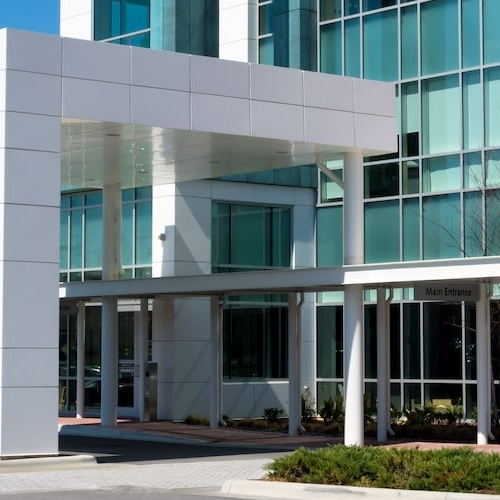FHA mortgage insurance removal: A how-to guide
Mar 9, 2024
•5-minute read

As of November 16, 2025, both Fannie Mae and Freddie Mac no longer have a minimum credit score threshold in their conventional loan eligibility guidelines. Loan approval will instead be based on an evaluation of overall credit risk factors.
For many first-time or repeat home buyers, an FHA loan is an attractive financing option due to its less restrictive down payment and credit score requirements. While this type of mortgage can make homeownership more affordable, however, you may pay more than expected. That’s because FHA loans require mortgage insurance premiums, which can be difficult to cancel.
In this article, we’ll discuss who is eligible for FHA MIP removal, how to request a cancellation from your lender if you qualify and other considerations you can make if you don’t.
How to remove FHA mortgage insurance: Step-by-step
An FHA loan requires extra protection to cover the lender’s liability. This is accomplished through an upfront mortgage insurance premium (MIP) and a monthly fee, which is required on all FHA loans. That means buyers have to make MIP payments no matter how much they put down, even if it is 10% or more.
Fortunately, if you have an FHA loan, you may qualify for MIP cancellation, depending on when you closed on the mortgage or how much you put down. Use the steps below to find out what options are available for your situation.
-
Check your eligibility
To remove your FHA loan’s mortgage insurance premiums, you’ll need to qualify under specific requirements.
If your mortgage originated before June 3, 2013, you’d need to meet the following conditions:
- You’ve made all monthly mortgage payments on time.
- You’ve paid for at least 5 years of a 20, 25 or 30-year loan. (There’s no time limit for a 15-year mortgage.)
- Your mortgage has a 78% or less loan-to-value ratio (LTV).
If your loan was finalized on or after June 3, 2013, you’d need to have completed the following:
- You made a 10% or larger down payment when purchasing the home.
- You’ve made on-time mortgage payments for the last 11 years.
Unfortunately, if you don’t meet either set of the above conditions, you won’t be able to cancel your MIP while keeping your FHA loan intact. However, if you’re determined to get rid of your mortgage insurance, you can apply to refinance your FHA loan into a conventional mortgage, but you’ll have to meet specific requirements for this option.
To qualify for a refinance with most lenders, you’ll need to have:
- A credit score of 620 or higher
- At least 5% - 25% equity in your home
Of course, the above conditions may vary depending on the lender or the loan type you use. To make sure you qualify for MIP cancellation or a refinance, you should talk to a Home Loan Expert ahead of time.
-
Review your options
Before you decide whether to refinance your FHA loan or cancel your MIP, you should consider the benefits of each. For some borrowers, a refinance may be the most beneficial option, even if they qualify for cancellation.
Advantages of FHA mortgage insurance removal
Removing your MIP will help lower your monthly mortgage payment since you’ll no longer need to pay for the premium. This reduction could give you the ability to put more money towards your mortgage, hopefully allowing you to pay it off sooner.
The earlier you pay off your mortgage, the less money you have to put towards interest. Even if you only pay an extra $50 each month, you can save thousands of dollars in the long run.
For example, if you take out an FHA loan for $200,000 with an interest rate of 4% and have a $954.83 monthly mortgage payment, it’d normally take about 27 years to pay it off. With an extra $50 each month saved from canceling your MIP, you could make payments of $1,004.83, which would reduce the time it takes to pay off the loan by around 2 years and 8 months - and you could save up to $14,413.27 in interest.
Advantages of a refinance into a conventional loan
A refinance can be beneficial to an FHA borrower for several reasons. Not only does a new conventional mortgage remove your MIP payments, but you could also qualify for a lower interest rate or longer loan term if your credit score is high enough. In other words, this option could significantly reduce the amount of your monthly payment.
But keep in mind that your credit score could limit your ability to secure a better mortgage rate. If you currently have a lower score, you may want to wait to refinance until you’ve built up your credit or look for refinance options specifically designed for borrowers with lower credit scores.
-
Contact your lender
You’ll need to notify your lender that you want to remove your MIP if it hasn’t already been canceled or if you’ve decided to refinance your mortgage loan.
FHA mortgage insurance cancellation
If your mortgage started between January 2001 and June 3, 2013, your MIP should automatically cancel once you reach 22% in home equity. For borrowers who closed on or after June 3, 2013, your MIP should end after 11 years if you made a down payment of more than 10%. If you didn’t, you’ll have to pay MIP for the life of the loan. If you do cancel your MIP, you can check your statements to ensure you’re no longer paying monthly mortgage insurance premiums.
If you see MIP payments on your mortgage balance statement, even though you’re eligible for cancellation, you can reach out to your lender to request removal. They’ll double-check that you’re eligible before canceling your MIP coverage.
FHA loan refinance
With a refinance, you’ll need to apply for your new mortgage like you would for any other type of home loan. Tell your lender that you want to refinance your FHA mortgage into a conventional one to remove your MIP.
From there, your loan officer will collect information on your current mortgage and start the approval process. After you have closed on your new loan, your FHA mortgage will be paid off, and you’ll have a new monthly payment amount, interest rate and term.
FHA MIP Removal FAQs
To learn more about FHA mortgage insurance premiums and removing this extra expense, you can read these common questions that homeowners often ask.
If I refinance to a conventional mortgage will I have to pay PMI?
Like FHA loans that require MIPs, borrowers have to pay for private mortgage insurance (PMI) when using a conventional home loan with a down payment smaller than 20%. When you refinance, you can avoid the PMI requirement by ensuring that your new loan is only 80% of your home’s value. If you decide to refinance for a larger amount, you’ll need to pay for PMI until your LTV ratio is 80%.
When can MIP be removed from an FHA loan?
Depending on when you finalized your loan and your payment history, your FHA MIP could end after 11 years with a 10% down payment (for loans created on or after June 3, 2013) or 5 years if you have 78% LTV (for loans originated before June 3, 2013).
If you closed on your FHA mortgage on or after June 3, 2013, and didn’t put down at least 10% of the home’s purchase price, you’ll need to pay MIP for the life of the loan or until you refinance to a different type of mortgage.
Can I reduce my mortgage insurance premium without removing it?
If you don’t qualify for MIP removal or a conventional refinance, you may still be able to reduce your insurance payments. Since interest rates have dropped over the last few years, you probably have an annual mortgage insurance premium that was calculated with a higher rate.
For instance, if you got your FHA loan in January 2015 and your annual MIP had a higher rate than what’s available now, you could use an FHA streamline refinance to get a lower annual rate. Even though you’d still have to pay mortgage insurance premiums, the amount could be significantly reduced, decreasing your monthly payment.
Can I use a cash-out refinance to cancel my MIP payments?
A cash-out refinance works like a conventional refinance loan, except that it converts some of your home’s equity into cash, which can be used for anything from home improvements to credit card debt consolidation. So, in theory, you could use this option to remove your MIP. To qualify, you’ll need to make sure you meet your lender’s minimum credit score and equity amount requirements.
The bottom line
While FHA loans are typically easier to qualify for, they could also be more expensive than expected over their lifetime, thanks to MIP. Thankfully, you have a few options for removing your MIP payments, such as a refinance.
If you want to learn more about requirements or the interest rate or loan amount you could qualify for, fill out an online application today to get started.

Victoria Araj
Victoria is a former Team Leader of editorial content at Rocket Mortgage and she held roles in mortgage banking, public relations and more in her 19+ years with the company. She holds a bachelor’s degree in journalism with an emphasis in political science from Michigan State University, and a master’s degree in public administration from the University of Michigan.
Related resources

5-minute read
FHA multifamily loans: A complete guide
If you're interested in buying a home with multiple units and becoming a landlord, an FHA multifamily loan can help. Learn more about how these loans work.
Read more

5-minute read
FHA commercial loan programs: An introduction
FHA commercial loans are available for the creation of housing for low-income, elderly, or disabled people. Learn more about this type of lending.
Read more

5-minute read
FHA nonoccupant co-borrowers: Guidelines and how they can help
Nonoccupant co-borrowers can make a big difference in the qualifying process for an FHA loan. Learn the requirements for using this process effectively.
Read more